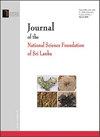饱和度对土钉拔出阻力的影响
IF 0.4
4区 综合性期刊
Q4 MULTIDISCIPLINARY SCIENCES
Journal of the National Science Foundation of Sri Lanka
Pub Date : 2023-06-30
DOI:10.4038/jnsfsr.v51i2.11185
引用次数: 0
摘要
土钉支护是一种用于加固现有地基条件的技术。这是通过在土壤中安装被称为钉子的紧密间隔的被动结构夹杂物来实现的,这些钉子有助于提高土壤的整体抗剪强度。钉子的抗拔力是灌浆-土壤界面处的剪切应力。土钉的抗拔性取决于许多参数。在影响土钉抗拔力的因素中,土体的饱和度是一个重要因素。由于土体的饱和度随土壤含水量的变化而变化,在强降雨期间,抗拔性可能会降低。然而,在最坏的情况下,并没有对土钉的拉拔试验进行验证。因此,测量的抗拔性可能不是设计的安全参数。因此,在本研究中,通过使用实验室拉拔箱进行一系列实验室试验,研究了饱和度对拉拔阻力的影响。特别设计的防水帽用于施加背压,使拔出箱内的土壤饱和。试验期间,观察到灌浆钉附近的土压力变化。结果表明,饱和程度越高,抗拔性越低。当饱和程度接近土壤的最佳湿度时,观察到最大抗拔性。当土壤充分干燥时,由于灌浆表面和周围干燥土壤之间的粘结强度较低,因此观察到较低的抗拔性。本文章由计算机程序翻译,如有差异,请以英文原文为准。
Effect of Degree of Saturation on soil-nail Pullout Resistance
Soil nailing is a technique which is used to reinforce and strengthen the existing ground conditions. This is done by installing closely spaced, passive, structural inclusions known as nail into the soil and these nails helps to improve the overall shear strength of soil. The nail pullout resistance is the shear stress at the grout-soil interface. The soil-nail pullout resistance depends on many parameters. Among the factors influencing the soil-nail pullout resistance, degree of saturation of the soil is an important factor. As degree of saturation of soil mass change with the moisture content of the soil, the pullout resistance may decrease during the intense rainfall. However, verification of pullout tests on soil-nail are not conducted under the worst condition. Hence, measured pullout resistance may not be a safe parameter for design. As such, in this research study, the effect of degree of saturation on pullout resistance was studied by conducting a series of laboratory tests using a laboratory pullout box. Especially designed waterproof cap was used to apply back pressure to saturate the soil within the pullout box. Variation of earth pressures close to the grouted nail were observed during the tests. It was evident from the results that higher the degree of saturation, lower the pullout resistance. Maximum pullout resistance was observed when the degree of saturation is near the optimum moisture of the soil. When the soil is sufficiently dry, lower pullout resistance was observed due to low bond strength between grout surface and surrounding dry soil.
求助全文
通过发布文献求助,成功后即可免费获取论文全文。
去求助
来源期刊

Journal of the National Science Foundation of Sri Lanka
MULTIDISCIPLINARY SCIENCES-
CiteScore
0.90
自引率
0.00%
发文量
57
审稿时长
>12 weeks
期刊介绍:
The Journal of National Science Foundation of Sri Lanka (JNSF) publishes the results of research in Science and Technology. The journal is released four times a year, in March, June, September and December. This journal contains Research Articles, Reviews, Research Communications and Correspondences.
Manuscripts submitted to the journal are accepted on the understanding that they will be reviewed prior to acceptance and that they have not been submitted for publication elsewhere.
 求助内容:
求助内容: 应助结果提醒方式:
应助结果提醒方式:


